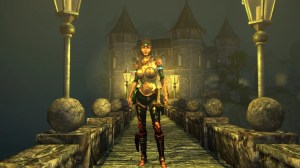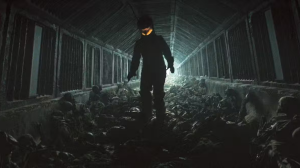Comic artist Jackson “Butch” Guice died at the age of 63. Guice worked for Marvel and DC Comics over his decade spanning career. Guice came to prominence on the X-Men book X-Factor, where he was one of the co-creators of Apocalypse, one of the greatest X-Men villains ever, and The Flash, where he helped kick off Wally West’s tenure as the Flash. Guice also drew Action Comics in the early ’90s, drawing chapters of the blockbuster “The Death of Superman”, “World Without a Superman”, “Funeral for a Friend”, “Reign of the Supermen”, and “Return of Superman”. Guice’s death was announced by his brother-in-law on Facebook, who had this to say about Guice’s life:
Videos by ComicBook.com
“People all over respected his talent and his ability to turn pencil strokes into living, breathing, I swear their gonna walk right off the page and punch ya in the throat, works of Real Art. But more then that, they knew that they were gonna get an honest answer from Butch. Not some canned, milky, watered down version of what they needed to hear. The Real Deal. He earned the respect of his peers because they knew they could trust him and his word. Art work, once laid down on paper or canvas or what ever medium he was working with at the time, is solid and the proof is in the end result. A man’s word; whether you can put stock into what he says and know he stands behind it… like so many other things today, is ify at best.”
Guice began his career with fanzine work, and his first published artwork came from 1982’s The Crusaders, although he had done ghost work with Pat Broderick on Rom Annual #1. Marvel editor Al Milgrom noticed his work on fanzines, and his work on Rom, and decided to give him work, with Guice getting a tryout on Micronauts #48. He ended up drawing the next ten issues of the book, all while contributing to The Official Handbook of the Marvel Universe, and became known for his “Butch Guice Portfolio” series of pin-ups. He’d work on books like X-Men and the Micronauts, Dazzler, and the Indiana Jones and the Temple of Doom adaptation. X-Factor was his big break, drawing issues #1-3 and #5-7. He did some work with writer Mike Baron, and then got tapped for The Flash, giving Wally West a perfect beginning as the Flash.
RELATED: Sorry Barry Allen, But Wally West is Actually the Best Flash
Guice’s time on Action Comics during the most popular era of Superman comics since the Silver Age showed exactly what he could do on comics’ first superhero. Guice’s issues of Action are great, his detailed linework and style really gelling with the book. He was responsible for the Eradicator issues of Action Comics during “Reign of the Supermen” and he was able to do a fantastic job with this darker version of Superman. Guice’s work on Superman brought him to the masses who jumped on the book because of “The Death of Superman”, with an entire new generation of comic fans getting to see what all the fuss was about with his work.
Guice’s best work for a lot of fans was Resurrection Man. Written by the team of Dan Abnett and Andy Lanning, Resurrection Man followed Mitch Shelley, a man who resurrected after he died with a different superpower each time. Resurrection Man ran through 1997 to 1999 for 28 issues — #1-27 and #1,000,000 — and Guice’s work really gave the book its own visual identity. Guice was that kind of artist; his work seemed simple, but his style was one of a kind. Guice worked with some of the best writers in the history of the modern comic medium — Mark Waid, Brian Michael Bendis, Chris Claremont, Warren Ellis, Abnett and Lanning, and many more. While his output slowed down in the ’10 and ’20s, he’s a true legend and will be dearly missed. Go find his Resurrection Man; you’ll be happy you did.








